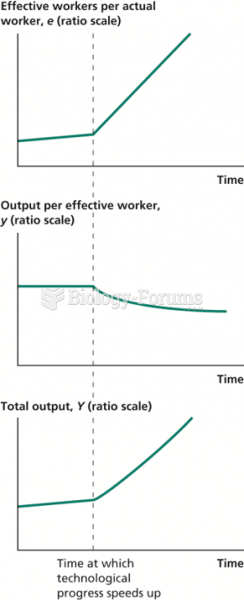This topic contains a solution. Click here to go to the answer
|
|
|
Did you know?
Bacteria have flourished on the earth for over three billion years. They were the first life forms on the planet.
Did you know?
In 1844, Charles Goodyear obtained the first patent for a rubber condom.
Did you know?
There are more nerve cells in one human brain than there are stars in the Milky Way.
Did you know?
Famous people who died from poisoning or drug overdose include, Adolf Hitler, Socrates, Juan Ponce de Leon, Marilyn Monroe, Judy Garland, and John Belushi.
Did you know?
Medication errors are more common among seriously ill patients than with those with minor conditions.







